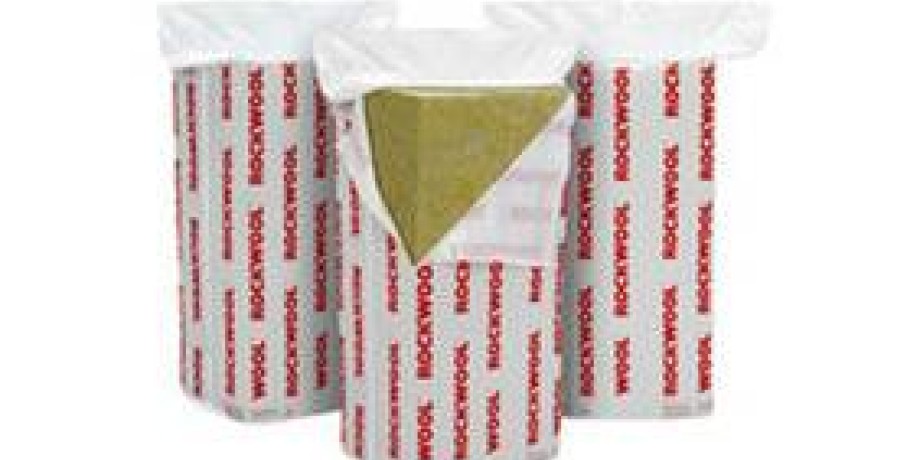Rockwool Flexi Insulation Guide

Effective Product for a Perfect Fit
When adding insulation to your walls, floors or roof space, what you need and should expect of the insulation material installed is that it will remain effective in many years to come, that is that it will not be under the influence of external factors that usually cannot be controlled, such as moisture, fire exposure, timber expanding or shrinking due to the change of moisture content etc. Well, this is something that can be gained with Rockwool Flexi insulation slabs that are not only highly effective but as the name states, also very flexible.
Regardless of whether you are insulating your walls, floors or ceilings, this innovative product offers a perfect fit within the timber frame wall, roof rafters or floor joints. It basically comes with an advanced flexible edge that can be easily installed, making sure that the insulation will not fall off or allow increased airflow which can affect the functionality of the entire insulation construction. Basically, if any insulation material is installed when the timber has significant moisture content, this can result in timber shrinkage once it dries out, further on leading to the insulation, if not flexible enough, falling off, thus leaving an uninsulated area within the wall, roof or floor structure. It is known that timber, once it shrinks, can leave a gap of about 6mm. If such void is not filled with insulation, it will leave a hole, allowing thermal bridging to appear and thus decreasing the effectiveness of insulation. This will not happen with Rockwool Flexi, since it will expand and fill in the gap. Another advantage that makes this product a perfect choice is that it also offers a level of acoustic insulation, it is extremely fire resistant and requires no maintenance, which will lower your costs on the long run.
Now, that you are aware of some basic advantages and characteristics of the product, all there is left is a Rockwool Flexi insulation guide, given right here.
Step by Step Installation Instruction
The installation process and the components of the system shall depend on the expected results, that is whether you are insisting on thermal or acoustic insulation as well as the installation area – are you adding Rockwool Flexi to your walls, floors or roof rafters. We will try to point some basic guidelines in regard to all insulation methods.
Thermal application
Timber frame walls
Typical cold frame construction may include a few basic options. In order of improving R and U values of the construction, it is advised that a breather membrane and a vapour control layer are installed. The construction includes a breather membrane, a layer of fully filling Rockwool Flexi within the cavity, a vapour control layer and a layer of plasterboard as an internal finish. This construction, depending on the thickness of the insulation material and the type of the breather membrane, can achieve U values of down to 0.25 W/m²K. Alternatively, a 25mm service zone at 600mm centres, between the battens can be included. Cold timber wall construction can also include wall cladding or tile hanging, where the material is installed between the studs and a minimum 25mm service zone is included. On the other hand, a warm frame construction can be achieved if another layer of partial fill insulation slab is added between the Rockwool Flexi slab and the vapour control layer.

Floors
When Rockwool Flexi is installed in suspended timber floors, it should be added between the joists, and supported with either a breather membrane or polypropylene netting. The perimeter edge insulation is installed between the wall and joists. In order of avoiding potential air gaps, the material should be installed as close as possible to the floor deck underside. Achieved U values shall depend on the thickness of the insulation and the ratio between exposed floor parameter length and the entire floor area.
Rafters
Here, the insulation is fitted between the rafters; a vapour control layer should be stapled to the rafter’s underside, with all joints sealed and lapped. Internal finish should include 12.5mm plasterboard, whereas, the installed breather membrane should be BBA approved.
Acoustic application
Rockwool Flexi insulation can also be used for acoustic insulation, since it can effectively reduce the noise either by absorbing sound or impeding its transmission through the construction, in cavity walls between apartments, terraced or semi-detached homes.

When used in separating timber frame walls, the construction can be in compliance with Robust Details E-WT-1, E-WT-2; when used in steel frame separating walls, one should consult the Robust Details E-WS-1 and follow the given requirements.
It can also be used as an acoustic and fire barrier in partitions, in both timber frames, where the insulation installed should have adequate thickness (min 50mm), 12.5mm acoustic rated plasterboard as the facing and timber studs at 600mm centres, which can lead to even 40RwDb sound reduction. The same applies to metal studs, whereas 50mm metal studs should be installed at 600mm centres and 41RwDb sound reduction can be achieved. For enhanced performance and sound reduction in office and factory spaces, the timber frame construction should include two layers of standard plasterboard whilst in metal frames for sound reduction in public buildings (up to 57RwDb), beside the double layer of plasterboard (15mm), 70mm metal studs should be used and Rockwool Flexi insulation minimum 70mm thick.
Find out more about the Rockwool Flexi Slab by reading its product specifications and description on oue website. Get a free quote for your insulation project and a fast delivey by placing your order online with Insulation Shop. For any additional information contact us through our live chat support system or send us an email to info@insulationshop.co.




























































































































